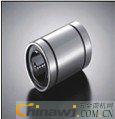Advanced technologies used in the 4g6 engine to accommodate euro-ii emissions regulations include hot-line oxygen sensors, electronically controlled egr exhaust gas recirculation systems, electronically controlled fuel vapor recovery systems, and crankcase forced ventilation systems.
1. Hot-line oxygen sensor The oxygen sensor used in the 4g6 series engine is a hot-wire oxygen sensor. Unlike other oxygen sensors, there is an electric heating element in the oxygen sensor, which can quickly heat the oxygen sensor after the engine is started. The operating temperature makes the emissions more favorable.
2, egr (exhaust gas recirculation) system 4g6 series engine to reduce the content of nox in the exhaust gas, the use of electronically controlled exhaust gas recirculation system. It is characterized in that a part of the exhaust gas discharged from the engine is sent back to the intake pipe through the egr valve, mixed with the fresh mixed gas, and then enters the cylinder again to participate in the combustion. The exhaust gas contains a large amount of co2, but the co2 can not burn, but can absorb a large amount of heat, so that the maximum temperature of the combustion of the mixture in the cylinder is reduced, thereby reducing the amount of nox generated in the combustion process, reducing the amount of nox in the exhaust gas, and reducing the pollution. In order to meet the emission regulations, the limit requirement for nox in the exhaust gas.
However, when the fresh gas mixture is mixed with the exhaust gas, the calorific value is lowered, and the output power of the heavy-duty engine http:// is decreased. In order to make the exhaust gas recirculation system function effectively, the amount of nox generated can be reduced. To ensure the engine's power performance, it is necessary to control the amount of exhaust gas that participates in the exhaust gas recirculation, that is, according to the intake air temperature of the engine and the magnitude of the load, the amount of exhaust gas entering the intake system is appropriately controlled. This process is carried out by ecu. The sensor senses the working condition of the engine and controls the egr solenoid valve to control the opening of the egr valve to achieve a reasonable working state of the egr valve.
3. Electronically Controlled Fuel Vapor Recovery System The electronically controlled fuel vapor recovery system consists of a vapor recovery tank (canister), a purge control solenoid valve, a vapor separation valve, and a corresponding vapor line and vacuum hose. When the engine is running, if the solenoid valve is opened, the air enters from under the canister under the action of vacuum suction in the intake manifold, and enters the engine intake manifold through the hose from the upper outlet through the activated carbon, so as to be adsorbed on the surface of the activated carbon. The gasoline molecules are re-evaporated and are drawn into the engine cylinders for combustion along with the air.
The amount of gasoline vapor recovered into the intake manifold must be controlled to prevent damage to normal mixture components. This control process is implemented by an electronic control unit (ecu) by controlling the opening of the purge solenoid valve. When the engine is stopped or idling, the electronic control unit (ecu) closes the purge solenoid valve and the gasoline vapor evaporated from the fuel tank is absorbed by the canister. When the engine is running at medium and high speeds, the electronic control unit (ecu) turns the purge solenoid valve on, and the gasoline vapor stored in the canister is sucked into the engine through the hose for combustion.
4. Crankcase forced ventilation The operation of the crankcase forced ventilation system is controlled by the positive crankcase ventilation valve (ie pcv valve). It re-introduces the exhaust gas that has entered the crankcase into the cylinder for combustion. The pcv valve will also control the flow of exhaust gas depending on the degree of vacuum in the intake manifold.
5. The unique air flow detection technology is the main basis for the ECU to control the fuel injection quantity of the engine. The air flow sensor (afs) must accurately measure the amount of air sucked by the engine at each instant. The ecu controls the spray more precisely according to the obtained signal. The amount of fuel injected by the oil is such that the air-fuel ratio of the mixture is optimized and the emissions are better.
There are many air flow meters for electronically controlled fuel injection engines on the market, such as wing-type, hot-wire, vacuum pressure sensors used by other companies, and our 4g6 series engines use a unique Karman vortex air flow sensor. The vortex air flow sensor's response speed is the fastest among all types of sensors, and it can respond to changes in air flow rate and flow rate almost simultaneously. In addition, it has the characteristics of high measurement accuracy, low air intake resistance and no mechanical wear.
However, due to its high cost, it is mostly used in mid- to high-end models. Its characteristic is that when the air flows through the triangular column in the middle of the sensor, a series of air vortices will be generated behind the column. By using the ultrasonic detection principle, the number of eddy currents generated per unit time can be accurately determined, and then the air flow rate can be calculated. In addition, the air flow sensor is equipped with an intake air temperature sensor and an atmospheric pressure sensor, which can detect changes in air temperature and atmospheric pressure at any time, so that ecu can correct the ignition and fuel injection. 